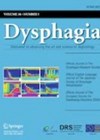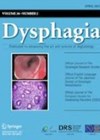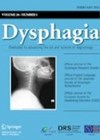Latest Contribution
Benign oesophageal strictures: overview and management strategies
Benign oesophageal strictures may have several attributable causes including caustic injuries, long-term acid reflux, eosinophilic oesophagitis, anastomotic strictures and endoscopic therapy. Endoscopic dilation via bougies or balloon dilators may treat most strictures successfully and satisfactorily. However, in some situations treatment...
All videoswallows are not performed equally…
Videofluoroscopy is one of the main instrumental tools used to assess swallowing biomechanics and physiology. In the UK, it is mainly within the remit of speech and language therapists (SLT) to perform videoswallows but there is considerable variability in both...
Association between dysphagia and sarcopenia: implications for assessment of older people
The onset of swallowing difficulties with progressive age is reported to occur in 13-35% of the elderly population. Sarcopenia is characterised by a decrease in muscle mass, strength and function. Sarcopenic dysphagia is a relatively new term. Its prevalence is...






